Conflict Zones
‘Nowhere to go’: Kashmir violence escalates amid India-Pakistan crossfire | Conflict News
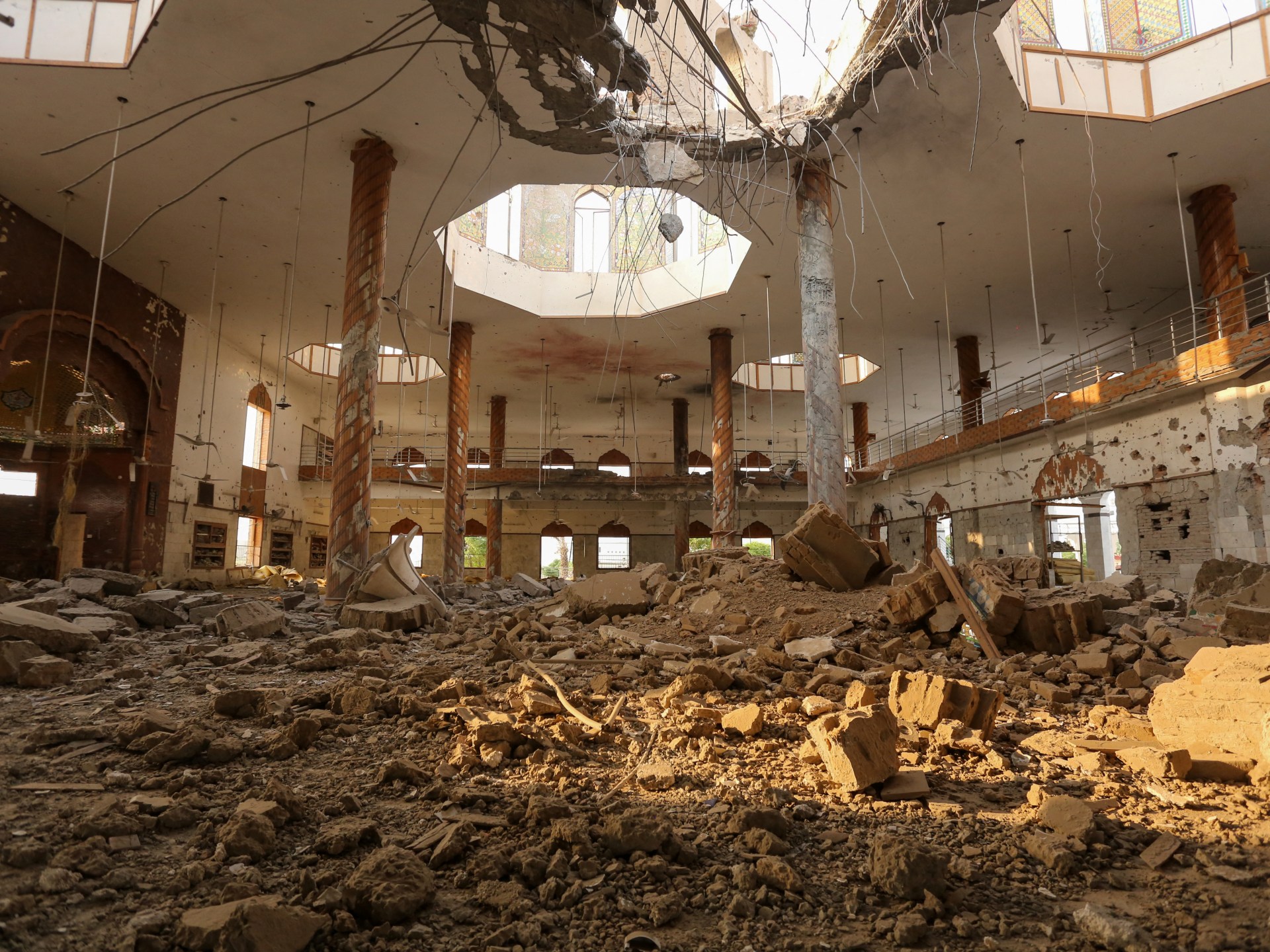
Indian and Pakistani soldiers exchanged gunfire overnight in Kashmir, a day after the worst violence between the nuclear-armed rivals in two decades.
Pakistani Prime Minister Shehbaz Sharif pledged to retaliate after India launched deadly missile attacks on Wednesday morning, with days of repeated gunfire along their border escalating into artillery shelling.
“We will avenge each drop of the blood of these martyrs,” Sharif said, in an address to the nation.
India said it had destroyed nine “terrorist camps” in Pakistan in “focused, measured and non-escalatory” strikes, two weeks after New Delhi blamed Islamabad for backing an attack on tourists in the Indian-administered side of disputed Kashmir – a charge Pakistan denies.
At least 44 deaths have been reported from both sides of the border following Wednesday’s violence, including children. Islamabad said 31 civilians were killed by Indian attacks and firing along the border. New Delhi said 13 civilians and a soldier had been killed by Pakistani fire.
The largest Indian attack was on an Islamic seminary near the Punjabi city of Bahawalpur, killing 13 people, according to the Pakistan military.
Madasar Choudhary, 29, described to the AFP news agency how his sister saw two children killed in Poonch, on the Indian side of the frontier, on Wednesday.
“She saw two children running out of her neighbour’s house and screamed for them to get back inside,” Choudhary said, narrating her account because she was too shocked to speak. “But shrapnel got to the children – and they eventually died.”
Muhammad Riaz said he and his family had been made homeless after Indian attacks hit Muzaffarabad, the main city of Pakistan-administered Kashmir.
“We have no place to live,” he told AFP. There is no space at our relatives’ house. We are very upset; we have nowhere to go.”
On Wednesday night, Pakistan military spokesman Ahmed Sharif Chaudhry reported firing across the Line of Control – the de facto border in Kashmir – and said the army had been authorised to “respond in self-defence” at a “time, place and manner of its choosing”.
India’s army on Thursday morning reported firing “small arms and artillery guns” in multiple sites overnight, adding that its soldiers had “responded proportionately”, without giving further details.
India and Pakistan have fought multiple times since the violent end of British rule in 1947, when colonial officers drew straight-line borders on maps to partition the nations, dividing communities.
Muslim-majority Kashmir – claimed by both India and Pakistan – has been a repeated flashpoint.
Conflict Zones
Inside Muridke: Did India hit a ‘terror base’ or a mosque? | India-Pakistan Tensions
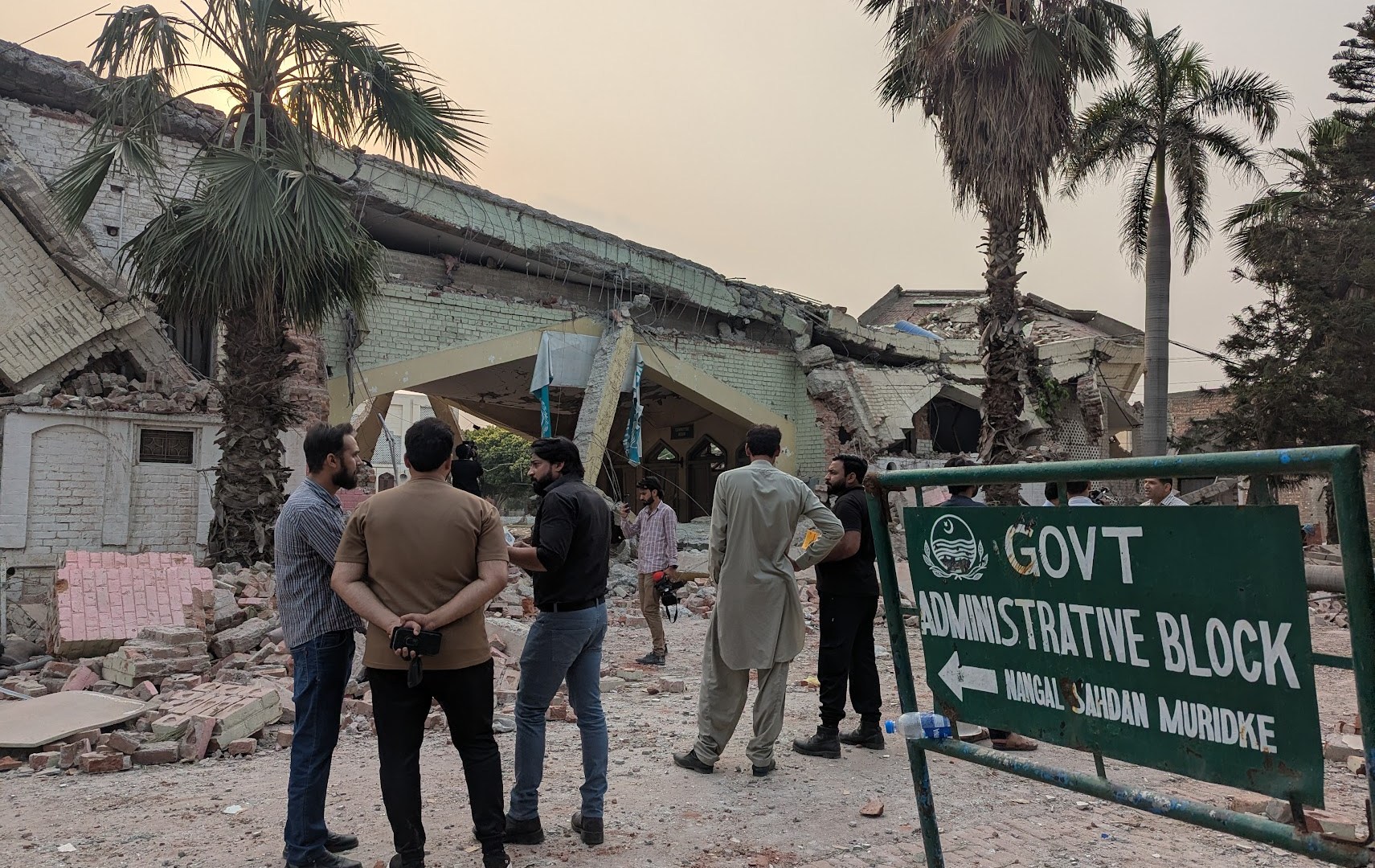
Muridke, Pakistan – The roof of the building sagged dangerously, sunlight peeked through a hole, while the ground below was littered with debris, and the doors of the rooms had been blown in by the blast.
This was India’s message to Pakistan, the outcome of one of a series of missile strikes launched in the early hours of May 7 as retribution for the deadly attack on tourists in Pahalgam, Indian-administered Kashmir, on April 22, in which 26 people were killed. India blamed Pakistan for that attack, but Islamabad has denied any involvement.
The Indian strike on Muridke was a part of Operation Sindoor, the most expansive set of aerial attacks on Pakistan outside the four wars that the nuclear-armed neighbours have fought. And of all the sites targeted by India, it was particularly significant.
Muridke has long been believed to be home to the Lashkar-e-Taiba (LeT) armed group, which India and other countries have blamed for carrying out deadly attacks on Indian soil, including the November 2008 attacks in Mumbai.
But while Indian security officials and the country’s Foreign Secretary Vikram Misri insisted on Wednesday that they struck “terrorist infrastructure” and that Indian missiles only hit armed groups, Pakistan has said that 31 civilians, including at least two children, were killed.
In Muridke, hours after the missile strike, the low-hanging roof belonged to the administrative block of a large compound called the Government Health and Educational Complex. The compound houses a hospital, two schools, a hostel, and a large seminary, with more than 3,000 students studying at various institutions, including the seminary. The compound also included 80 residences, homes to approximately 300 people, most of whom are government employees.
On Wednesday, the administrative block was struck, as was a mosque separated by a large veranda. Three men, all between the ages of 20 and 30 and part of the clerical staff, died in the attack, and one person was injured.
A rescue official at the site told Al Jazeera he had arrived within half an hour of the attack. “I was the one who discovered the first body,” he said, pointing to a room inside the administration block.
![The roof of the administration block, where one of the bodies was found, was close to collapsing after the strike. [Abid Hussain/Al Jazeera]](https://www.aljazeera.com/wp-content/uploads/2025/05/PXL_20250507_120245948-1746709271.jpg?w=770&resize=770%2C580&quality=80)
‘We had already been preparing for this’
A small city of just more than 250,000 people, Muridke is four hours away from Islamabad, and located roughly 30km (18 miles) from Lahore, the provincial capital of Punjab, which borders India.
Tauseef Hasan, a government official, told Al Jazeera that Muridke was the first location struck by Indian missiles that night.
“It was just a few minutes after midnight when I heard two massive booms, within two minutes. We had already been preparing for this, and I knew exactly what had happened,” Hasan said in a matter-of-fact tone.
Across the veranda stood the mosque, Jamia Ummul Qurah, with a large prayer hall where part of the roof had collapsed. Two gaping holes in the ceiling marked the spots where missiles had struck.
Hasan and his colleague Usman Jalees said that after the Pahalgam attack two weeks earlier, Pakistani authorities had assessed the risk of an attack on Muridke, given the rhetoric against the town and compound, which India has long argued was the headquarters of the LeT.
“We had been informed that Muridke could be a target, and that is why we had instructed the staff and residents of the compound to vacate and leave the place,” Jalees told Al Jazeera, adding that those killed were part of the skeleton staff who had remained behind.
On one side of the veranda, a large table displayed pieces of the missile that had struck the buildings. The smell of explosives and residual heat still clung to the metal fragments.
While both Hasan and Jalees insisted that the seminary and educational institutions were fully under state control, the compound’s origins tell a more complex story.
![The main hall of the mosque which was also struck by missile. [Abid Hussain/Al Jazeera]](https://www.aljazeera.com/wp-content/uploads/2025/05/PXL_20250507_120537182-1746709366.jpg?w=770&resize=770%2C580&quality=80)
Education or militancy?
The compound was founded in 1988 by Hafiz Saeed, the founder of Jamaat-ud-Dawa (JuD), a charity organisation widely considered to be a front for the LeT. The compound’s seminary, Jamia Dawa Islami, was also named after the group.
India accuses Saeed and the LeT of orchestrating several attacks on its territory, most notably the 2008 Mumbai attacks that left more than 160 people dead over several days.
Abid Hussain, a 51-year-old religious scholar who lives on the compound, vehemently denied Indian claims that the area served as a “training facility” or “headquarters of any terrorist outfit.”
“This compound has always been an educational centre for children, both boys and girls. I have been teaching here myself, having lived here for the past three decades,” the short, stocky man with a forked beard told Al Jazeera.
The religious teacher went on to challenge accusations that the area was used for training fighters.
“If we have grounds and facilities to give opportunities to our students to learn swimming, or horse-riding, or physical training, how does this imply this is training the terrorists?” he asked.
The Pakistani government took over the facility from the JuD in 2019, at a time when the country was under international pressure to crack down on Saeed and the LeT or be placed on a “grey list” of countries deemed as not doing enough to stop financing for banned armed groups.
![Pieces of the missiles were also kept for display which smelt of explosives and radiated heat. [Abid Hussain/Al Jazeera]](https://www.aljazeera.com/wp-content/uploads/2025/05/PXL_20250507_121720146-1746709444.jpg?w=770&resize=770%2C580&quality=80)
‘Saeed was once a regular’
Behind the mosque is a street where two houses had been completely destroyed. Solar panels and broken bricks were strewn everywhere.
Recalling the night of the attack, a resident, Ali Zafar, pointed to his residence behind one of the demolished buildings. He said the blast could be heard at least seven kilometres (four miles) away, near the house of a relative where he had moved with his family.
“A few days ago, the authorities told us to vacate the place, so we had moved outside the complex. It was certain that India would attack this area, as their media kept highlighting Muridke,” said Zafar, bearded and wearing glasses.
Hasan, the government official, said that, while the seminary and schools had closed for the academic year, the entire facility was under strict government supervision.
“Once the government took over the administration of the institute in 2019, we have ensured that the curriculum and teaching is completely supervised,” he said.
Hussain, the religious teacher, added that Saeed had stopped coming to the compound since the government took control.
“He used to be a regular back in the late ’90s and early 2000s,” he said.
Saeed, now in his late 70s, was arrested in 2019 and is currently serving a 31-year sentence handed down by a Pakistani court in 2022 in two “terror financing” cases. He was already serving a separate 15-year sentence, imposed in 2020, on similar charges.
Conflict Zones
Have India and Pakistan started a drone war? | Drone Strikes News
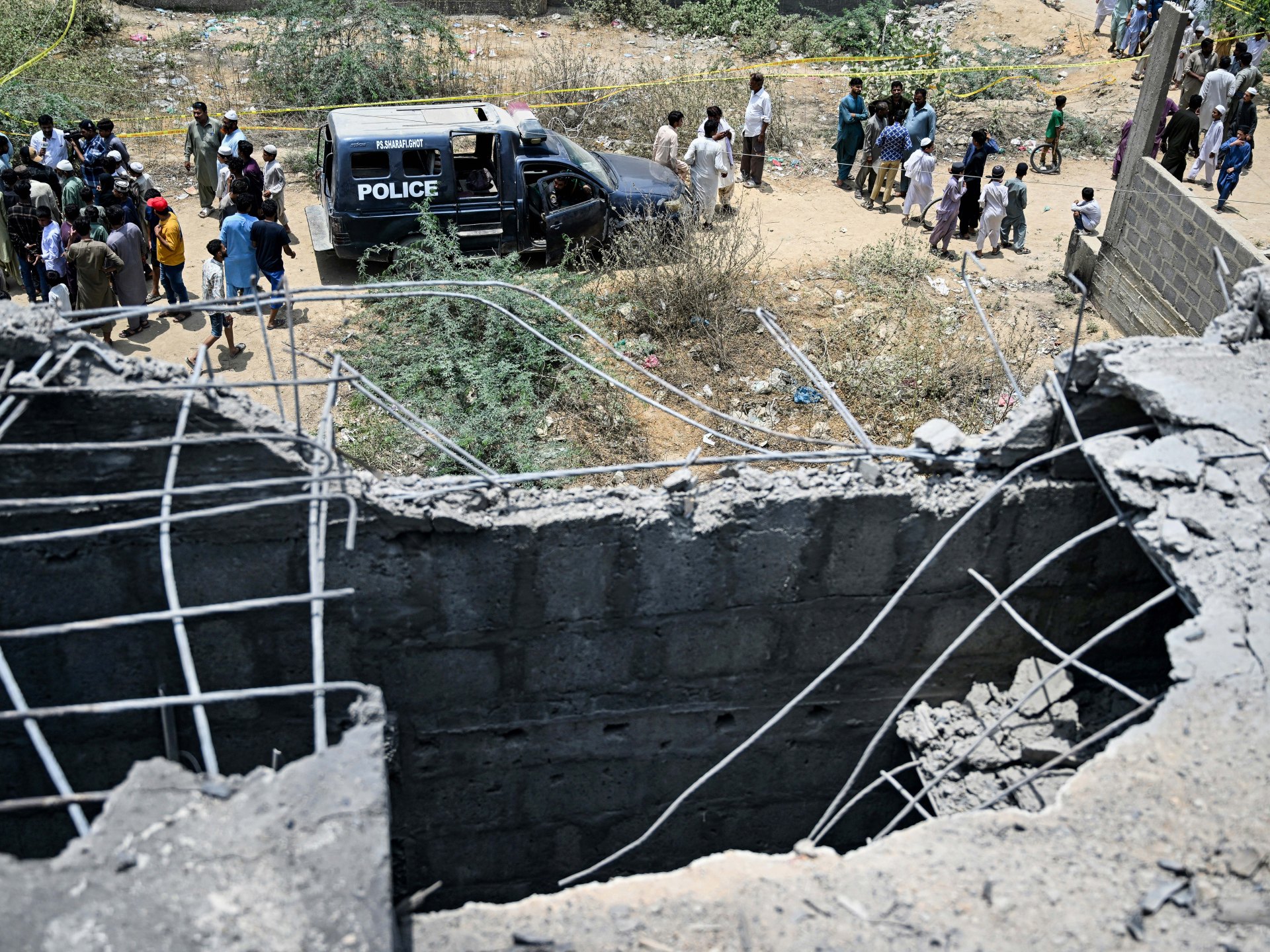
Pakistan’s military said on Thursday morning that the country’s air defence system had brought down 25 Indian drones overnight over some of the country’s chief cities, including Lahore and Karachi. At least one civilian has died, and five people were wounded, it said.
India’s Defence Ministry confirmed hours later that it had targeted Pakistan’s air defence radars and claimed that it was able to “neutralize” one defence system in Lahore. It said Pakistan had attempted to attack India and Indian-administered Kashmir with drones and missiles overnight, but that these had been shot down.
The drone attacks represent the latest escalation between the nuclear-armed neighbours, a day after India launched deadly missile strikes on Pakistan and Pakistan-administered Kashmir, killing at least 31 people, according to Islamabad. Those were the most extensive Indian strikes ever on Pakistan outside the four wars that they have fought. Heavy artillery shelling from both sides overnight caused border communities in the disputed Kashmir region to flee.
Simmering tensions erupted on April 22 after gunmen killed 25 tourists and a local pony rider in Pahalgam in Indian-administered Kashmir. India blamed Pakistan for backing fighters who claimed the attack. Islamabad has denied any involvement.
Here’s what we know about the latest escalation of drone attacks:
What happened?
In a briefing on Thursday, Pakistani army spokesman Lieutenant General Ahmad Sharif Chaudhry said the country came under attack from a wave of drones overnight, targeting many of the most populated cities, including Karachi and Lahore.
Pakistan’s air defence system intercepted and brought down these drones, he said. Pakistan’s military said 25 such drones were jammed and shot out of the sky.
The falling debris killed one civilian and injured another person in the southern Sindh province, while an additional drone targeted and wounded four soldiers in a military installation in Lahore, Chaudhry said in the news briefing. Partial damage to “military equipment” was recorded in that latter incident.
Chaudhry described the drone attacks as an act of “naked aggression” and a “serious provocation”, and pledged that Pakistan was ready to retaliate.
“It appears that India has apparently lost the plot and, rather than going on a path of rationality, is further escalating in a highly charged environment. Pakistan Armed Forces remain fully vigilant to any type of threat,” he said.

What has India said?
Hours after the drone attacks, India accepted responsibility – but insisted it had been provoked.
On the night of May 7-8, India’s Ministry of Defence said, Pakistani forces attempted to “engage a number of military targets” in multiple areas in northern and western India and Indian-administered Kashmir using “drones and missiles”. These were shot down by India’s air defence systems, the ministry said.
“Today morning Indian Armed Forces targeted Air Defence Radars and systems at a number of locations in Pakistan. Indian response has been in the same domain with same intensity as Pakistan,” the ministry’s statement said. “It has been reliably learnt that an Air Defence system at Lahore has been neutralised.”
Pakistan has not commented on Indian claims that it attempted to strike India with drones and missiles.

Where were the drones in Pakistan brought down?
In his briefing, Pakistan army spokesperson Chaudhry said drones either attacked or were shot down in the following locations:
Lahore: The capital of the eastern Punjab region, and Pakistan’s second-largest city of 14 million people. Local police official Mohammad Rizwan told reporters a drone was downed near Walton Airport, an airfield that the Pakistani military manages and uses for radars. The airport also has training schools.
Gujranwala: The fourth-largest city in Punjab, with a population of 2.5 million people.
Chakwal: Also in the Punjab region, with a population of about 1.5 million.
Rawalpindi: The city in Punjab is home to the headquarters of Pakistan’s powerful military. The city has a population of close to 6 million people.
Attock: Close to the capital, Islamabad, Attock is a cantonment city with a population of 2.1 million.
Nankana Sahib: The Punjab city has a population of just more than 100,000 but enjoys far greater significance than that number suggests: It was the birthplace of Guru Nanak, the founder of Sikhism, and is one of the holiest sites of the faith.
Bahawalpur: Also in Punjab, it has a population of nearly one million.
Miano: A town in Sindh province, housing a major oil field.
Chor: A small town in the Umerkot district of the southeastern province of Sindh.
Ghotki: A city in northern Sindh known for its date palms, with a population of about 120,000.
Karachi: Pakistan’s most populous city of 20 million people is based in Sindh.
Which cities did India claim Pakistan was targeting?
India said Pakistani missiles and drones attempted to strike 15 cities and towns but that all were brought down.
Awantipora: A town of 12,000 people, on the Jhelum River in Indian-administered Kashmir.
Srinagar: The biggest city in the Kashmir valley, Srinagar has a population of 1.2 million people.
Jammu: The winter capital of Indian-administered Kashmir, it has a population of 500,000 people.
Pathankot: Also in Indian-administered Kashmir, Pathankot is a major nerve centre of the Indian army’s operations. It is home to the largest military base in Asia.
Amritsar: The city in India’s Punjab state has a population of 1.1 million and is home to the Golden Temple, one of Sikhism’s holiest shrines.
Kapurthala: A smaller town of 100,000 people in Indian Punjab.
Jalandhar: Right next to Kapurthala, Jalandhar has a population of nearly 900,000.
Ludhiana: The most populous city in Indian Punjab is home to 1.6 million people.
Adampur: The Punjab town is tiny, with just 20,000 people. But it is home to India’s second-largest air force base.
Bhatinda: The city in Indian Punjab has a population of nearly 300,000.
Chandigarh: The capital of both Indian Punjab and the neighbouring state of Haryana, Chandigarh has a population of just more than one million.
Nal: A tiny town near the India-Pakistan border in the desert state of Rajasthan, it is home to a civilian airport and an air force base.
Phalodi: A city of 66,000 people in Rajasthan, Phalodi is famous for its salt industry.
Uttarlai: A small village in Rajasthan that is home to an air force station.
Bhuj: A city of 190,000 people, Bhuj is in Gujarat, the western state of Indian Prime Minister Narendra Modi.
What drones were used in the attack on Pakistan?
Chaudhry, the Pakistani military spokesperson, identified the Indian projectiles as Harop drones.
Harop drones are a form of what are known as loitering munitions, and are developed by the Israeli government’s primary aviation manufacturer and supplier, Israel Aerospace Industries (IAI).
Loitering munitions are usually remotely controlled unmanned air vehicles (UAVs) designed to hover in the air after being deployed, waiting for a precise target to be exposed before they crash into it and self-detonate.
They are not meant to survive a confrontation, and so are also known as suicide drones or kamikaze drones.
The IAI Harop is reputed to be one of the deadliest drones because it combines ordinary UAV and missile capabilities. Spanning two metres (6.6ft) in length, the vehicle is small enough to bypass most aircraft detection systems. It can fly over a range of 200km (120 miles) and is programmed for about six hours of flight. The drone can return and land at its launch base if it fails to engage a target.
The Indian Armed Force (IAF) is one of Israel’s biggest clients for drones. Between 2009 and 2019, India bought at least 25 Harop drones, with a single sale of 10 units costing $100m, according to reporting by The Jerusalem Post.
India’s fleet also includes Searcher and Heron drones, similarly manufactured by the IAI. Searchers are typically used for reconnaissance missions, while the Heron has similar missile capabilities to the Harop.
Why are the drone attacks on Pakistan significant?
Multiple drones breaching Pakistan’s airspace, hovering in the country’s most populous regions, and managing to attack a military location imply that India has the capabilities to breach Pakistan’s air defence and strike its most crucial nerve centres.
The attacks, according to the Pakistani army, were an “extreme act of provocation” that could lead to a major escalation of violence between the two nuclear powers.
Additionally, the drone breach poses a potential threat to civil aviation safety in Pakistan.
The country’s civil aviation authorities temporarily suspended operations in four airports on Thursday, before lifting the restrictions: Allama Iqbal International Airport in Lahore, Jinnah International Airport in Karachi, Islamabad International Airport, and Sialkot International Airport.
What’s the wider context?
Kashmir, famed for its picturesque lakes, meadows and snow-capped mountains, is at the heart of tensions between the two countries.
India and Pakistan both administer parts of it, as does China. But India claims all of it, and Pakistan claims Indian-administered Kashmir, too. Three of the four previous India-Pakistan wars have been over Kashmir, which spans 22,200 sq km (8,570 square miles).
India has for years blamed Pakistan for supporting, arming, and training armed groups seeking secession from India. Pakistan has insisted it provides only moral and diplomatic support to Kashmir’s separatist movement.
New Delhi blamed April’s attack on an obscure group, The Resistance Front (TRF), and claimed it was Pakistan-backed. Islamabad, however, has denounced the attacks and denied involvement, calling for a “transparent, credible, impartial” investigation into the incident.
Both countries, with a combined population of 1.6 billion, are nuclear powers, raising fears among security experts that further escalation could be disastrous.
Conflict Zones
‘No deterrent value’: Will India’s strikes on Pakistan stop armed attacks? | India-Pakistan Tensions News
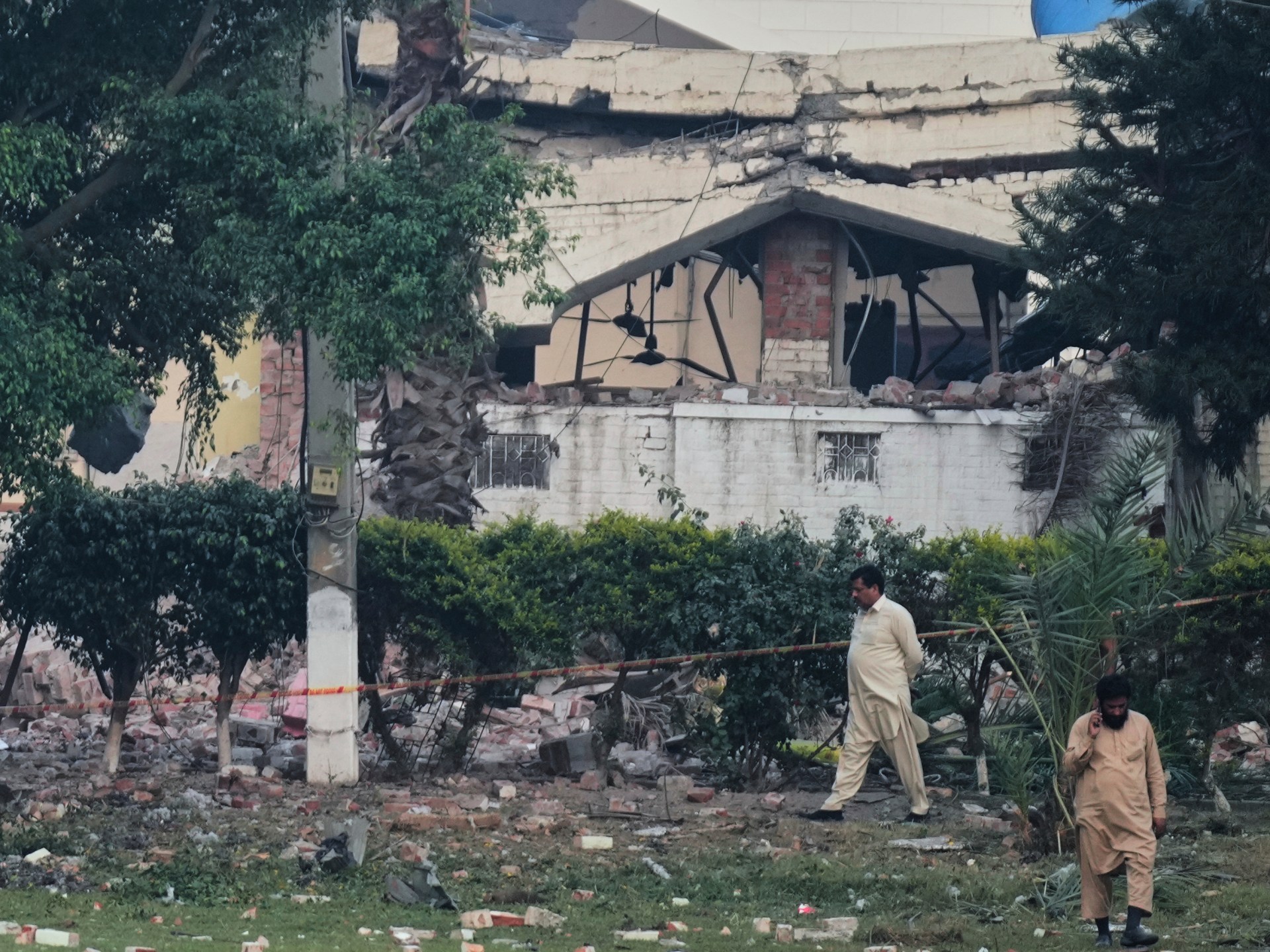
New Delhi, India – As Indian military officials took the podium next to the country’s foreign secretary at a media briefing on Wednesday morning, after unprecedented missile strikes into Pakistan and Pakistan-administered Kashmir, a timeline of death played out on a video screen behind them.
The 2001 attack on the Indian parliament in New Delhi in which nine people were killed. An assault on the Akshardham Temple in the western city of Ahmedabad in 2002, in which 33 people died. The 2008 Mumbai attacks in which more than 160 people were killed. Several other attacks. And finally, the killings in Pahalgam, Indian-administered Kashmir, in which gunmen shot down 26 people on April 22.
The May 7 missile strikes on Pakistan and Pakistan-administered Kashmir were payback, New Delhi has said, for Islamabad’s refusal to crack down on armed groups that India insists have been financed, trained and sheltered by its neighbours over the past four decades. Islamabad denies that charge – though it acknowledges that some of these groups are based in Pakistan.
But the missile strikes were about more than retribution, Indian Foreign Secretary Vikram Misri suggested on Wednesday. The strikes, he said, were driven by “a compulsion both to deter and to pre-empt” attacks by armed groups launched on Indian territory. Misri accused Pakistan of failing to take “demonstrable steps” against “terrorist infrastructure on its territory or territory under its control”.
Yet as tensions between the nuclear-armed neighbours escalate hour by hour, with Pakistan accusing India of launching a wave of drones into its territory on Thursday, military and geopolitical analysts question whether India’s approach serves as a deterrent against armed groups eager to target it. They argue that New Delhi’s actions are more symbolic and aimed at addressing its domestic audience rather than tactical advancement in the so-called “fight against terror”.
“This is all a domestic theatre,” said Ajai Sahni, executive director of South Asia Terrorism Portal (SATP), a platform that tracks and analyses armed attacks in South Asia. “The Indian strikes [in Pakistan] have no deterrent value.
“The aim of the strike has nothing to do with military takeaway – the aim [for Indian Prime Minister Narendra Modi] was to speak with his own domestic audience,” Sahni told Al Jazeera. “And [Pakistan’s pledge] of retaliation is to speak with the audience of the other side. That is the genius of it – that both sides will claim victory from this.”
‘Justice is served’
The Indian army and Foreign Secretary Misri argued on Wednesday that the country’s security forces had been precise and careful in the selection of their targets.
Among them was Muridke, next to Lahore, Pakistan’s second-most populous city, and what India described as the Markaz Taiba camp of the Lashkar-e-Taiba (LeT), the group behind the 2008 Mumbai attacks.
At the media briefing with Misri, Indian Army Colonel Sofiya Qureshi referred to the site as the place where key perpetrators of the Mumbai assault – including Ajmal Kasab, the sole gunman who was captured alive – were trained. More than 160 people died in the Mumbai attack.
India also hit Bahawalpur, which New Delhi claims hosts the headquarters of the Jaish-e-Muhammad, an armed group behind the 2019 suicide bombing attack in Kashmir in which more than 40 Indian paramilitary soldiers were killed.
“Justice is served,” the Indian army noted in a post on X as early reports of the missile strikes poured in on Wednesday, 15 days after the Pahalgam killings. The Indian missile strikes killed at least 31 people in Pakistan – all civilians, according to Islamabad – including two children. India has denied that it targeted civilians.
But Pakistan has threatened to hit back, and after Thursday’s drone attacks, the South Asian nations are even closer to a full-blown military conflict. Any hits taken by armed groups from Indian missiles won’t fundamentally change their ability to target India, said Sahni.
“All these strikes will result in are certain tactical and operational adaptations,” said Sahni.
‘A renewed armed movement’
That – an adapted strategy on the part of armed groups – is precisely what was on display on April 22, when gunmen attacked tourists in Pahalgam, say experts.
In February 2019, after the suicide attack on Indian troops, Indian warplanes pierced Pakistani airspace and bombed Balakot in Khyber Pakhtunkhwa, where New Delhi claimed it hit “terrorists’ camps”. As Pakistan scrambled jets in response, a dogfight ensued, and an Indian Air Force jet was shot down. Pakistan captured the Indian pilot before returning him 60 hours later.
Both nations claimed victory – the Modi government in New Delhi said it had entered Pakistan and bombed “terrorists”, while Pakistan highlighted its downing of an Indian jet and the capture of a pilot as evidence that it came out on top. And so neither side, say experts, felt the need to really change.
That’s why Sahni said he believes no matter how the current tit-for-tat threats and attacks play out, they won’t alter long-term calculations for any of the actors involved. Instead, “the tensions will resurface, perhaps in different forms.”
A Kashmiri political analyst – who has seen India-Pakistan wars in 1965, 1971, and 1999, and three decades of Kashmiri armed rebellion against Indian rule – agreed. “If it was supposed to work, then Kashmir would not be standing where we are today,” they said, requesting anonymity, fearing reprisal from Indian forces. “One of the world’s most volatile flashpoints.”
Six months after the Pulwama attack, New Delhi unilaterally revoked the disputed Kashmir region’s partial autonomy and broke down the erstwhile state into two federally governed territories in August 2019. China and Pakistan, India’s neighbours that both control parts of Kashmir, condemned the move.
India then imposed a clampdown in Kashmir and arrested dozens of political leaders, journalists, and human rights activists, even as the Modi government claimed the region was returning to “normalcy”. Despite that – and the hundreds of armed rebels killed by Indian security forces over the years, “the armed movement continues,” Sahni pointed out.
“The movement keeps on renewing itself [despite India’s countermeasures for three decades],” noted Sahni. “In the current attack, there has been a certain loss of material – buildings have been blown up – but if there is implicit support for these groups in Pakistan, they will always come back.”
‘A fiasco’
In the early hours of Wednesday, the Pakistani military claimed it had downed at least five Indian warplanes that had been involved in the missile strikes. Local Indian officials and security sources confirmed to Al Jazeera and other media outlets that at least two fighter jets had “crashed”, though Indian officials have not commented on the issue publicly.
If the jets indeed belonged to the Indian fleet, “it will become difficult for India to make a decision in the future about sending in aircraft to impose punitive strikes on Pakistan,” said Ajai Shukla, a defence and strategic affairs commentator, who served in the Indian Army from 1976 to 2001.
Shukla noted that while a planned and rehearsed strike would have deterrent value, “the realities eventually depend on how much loss has been inflicted, compared to losses incurred.
“It’s a moment where India needs to pause and think,” added Shukla. “Even when both countries claim victory, at least one of them in their heart of hearts knows that this was not a victory. This was something that turned out to be a fiasco.
“If there is going to be an attitude that we will not admit anything and we will declare victory, then probably that weakness will never be eradicated,” Shukla said.
To Sahni, there’s a more imminent danger that has arisen from the strikes over the past two days. Previously, he said, both sides acted within unspoken but accepted “calibrated limits”.
Not any more.
“There are no clear lines on what is ‘escalation’ now,” he said. “And that’s the classic slippery slope, on the edge of a risky spiral.”
-
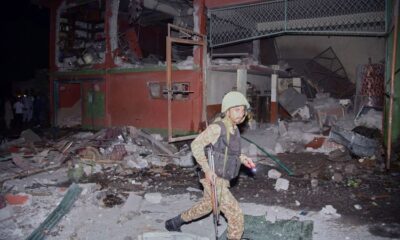
 Asia2 days ago
Asia2 days ago‘Operation Sindoor:’ Why India attacked Pakistan and conflict has escalated dramatically
-

 Lifestyle2 days ago
Lifestyle2 days agoThe Met Gala is over, but dandyism isn’t. Here’s how to dress like a dandy in everyday life
-
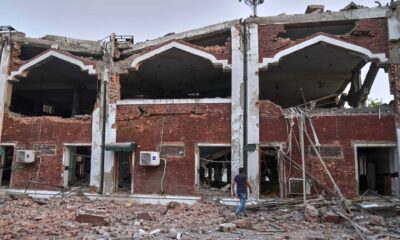
 Conflict Zones1 day ago
Conflict Zones1 day agoOperation Sindoor: What’s the significance of India’s Pakistan targets? | India-Pakistan Tensions News
-
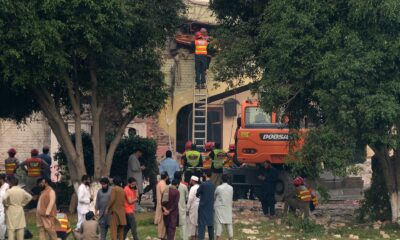
 Conflict Zones2 days ago
Conflict Zones2 days agoHow world leaders are reacting to India-Pakistan military strikes | Border Disputes News
-

 Middle East23 hours ago
Middle East23 hours agoWhat does the truce between the Houthis and the US mean for Yemenis? | Houthis
-
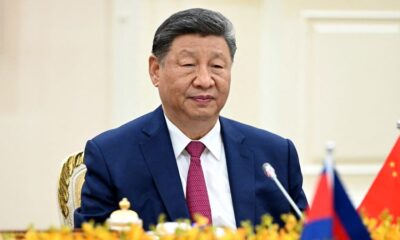
 Europe2 days ago
Europe2 days agoXi Jinping set to arrive in Moscow as Putin’s ‘guest of honor’ ahead of Victory Day military parade
-
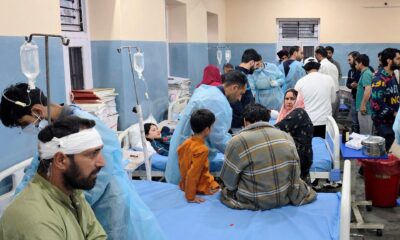
 Conflict Zones14 hours ago
Conflict Zones14 hours ago‘Don’t want war’: Kashmiri towns caught in deadly India-Pakistan crossfire | India-Pakistan Tensions
-

 Europe18 hours ago
Europe18 hours agoVance says Russia ‘asking for too much’ in concessions, while Trump says decisions ‘have to be made’ soon




